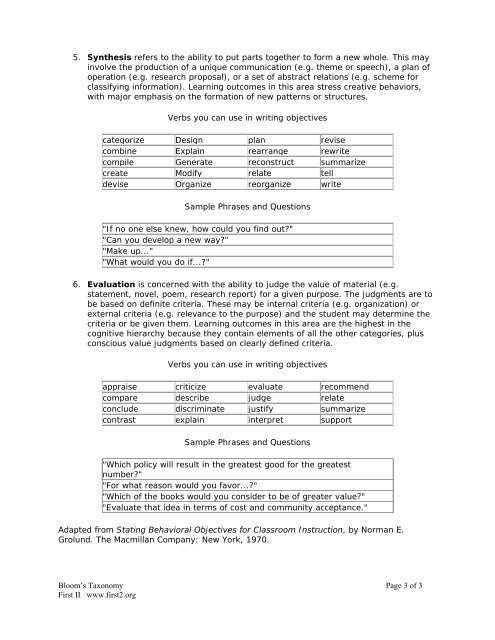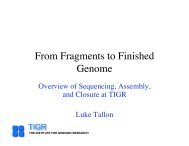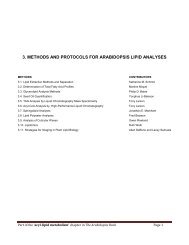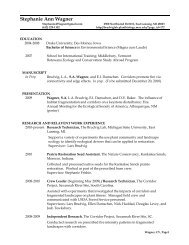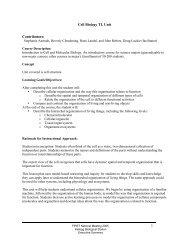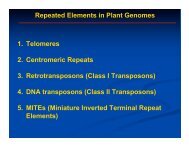Bloom's Taxonomy - first ii
Bloom's Taxonomy - first ii
Bloom's Taxonomy - first ii
Create successful ePaper yourself
Turn your PDF publications into a flip-book with our unique Google optimized e-Paper software.
5. Synthesis refers to the ability to put parts together to form a new whole. This may<br />
involve the production of a unique communication (e.g. theme or speech), a plan of<br />
operation (e.g. research proposal), or a set of abstract relations (e.g. scheme for<br />
classifying information). Learning outcomes in this area stress creative behaviors,<br />
with major emphasis on the formation of new patterns or structures.<br />
Verbs you can use in writing objectives<br />
categorize Design plan revise<br />
combine Explain rearrange rewrite<br />
compile Generate reconstruct summarize<br />
create Modify relate tell<br />
devise Organize reorganize write<br />
Sample Phrases and Questions<br />
"If no one else knew, how could you find out?"<br />
"Can you develop a new way?"<br />
"Make up..."<br />
"What would you do if...?"<br />
6. Evaluation is concerned with the ability to judge the value of material (e.g.<br />
statement, novel, poem, research report) for a given purpose. The judgments are to<br />
be based on definite criteria. These may be internal criteria (e.g. organization) or<br />
external criteria (e.g. relevance to the purpose) and the student may determine the<br />
criteria or be given them. Learning outcomes in this area are the highest in the<br />
cognitive hierarchy because they contain elements of all the other categories, plus<br />
conscious value judgments based on clearly defined criteria.<br />
Verbs you can use in writing objectives<br />
appraise criticize evaluate recommend<br />
compare describe judge relate<br />
conclude discriminate justify summarize<br />
contrast explain interpret support<br />
Sample Phrases and Questions<br />
"Which policy will result in the greatest good for the greatest<br />
number?"<br />
"For what reason would you favor...?"<br />
"Which of the books would you consider to be of greater value?"<br />
"Evaluate that idea in terms of cost and community acceptance."<br />
Adapted from Stating Behavioral Objectives for Classroom Instruction, by Norman E.<br />
Grolund. The Macmillan Company: New York, 1970.<br />
Bloom’s <strong>Taxonomy</strong> Page 3 of 3<br />
First II www.<strong>first</strong>2.org


